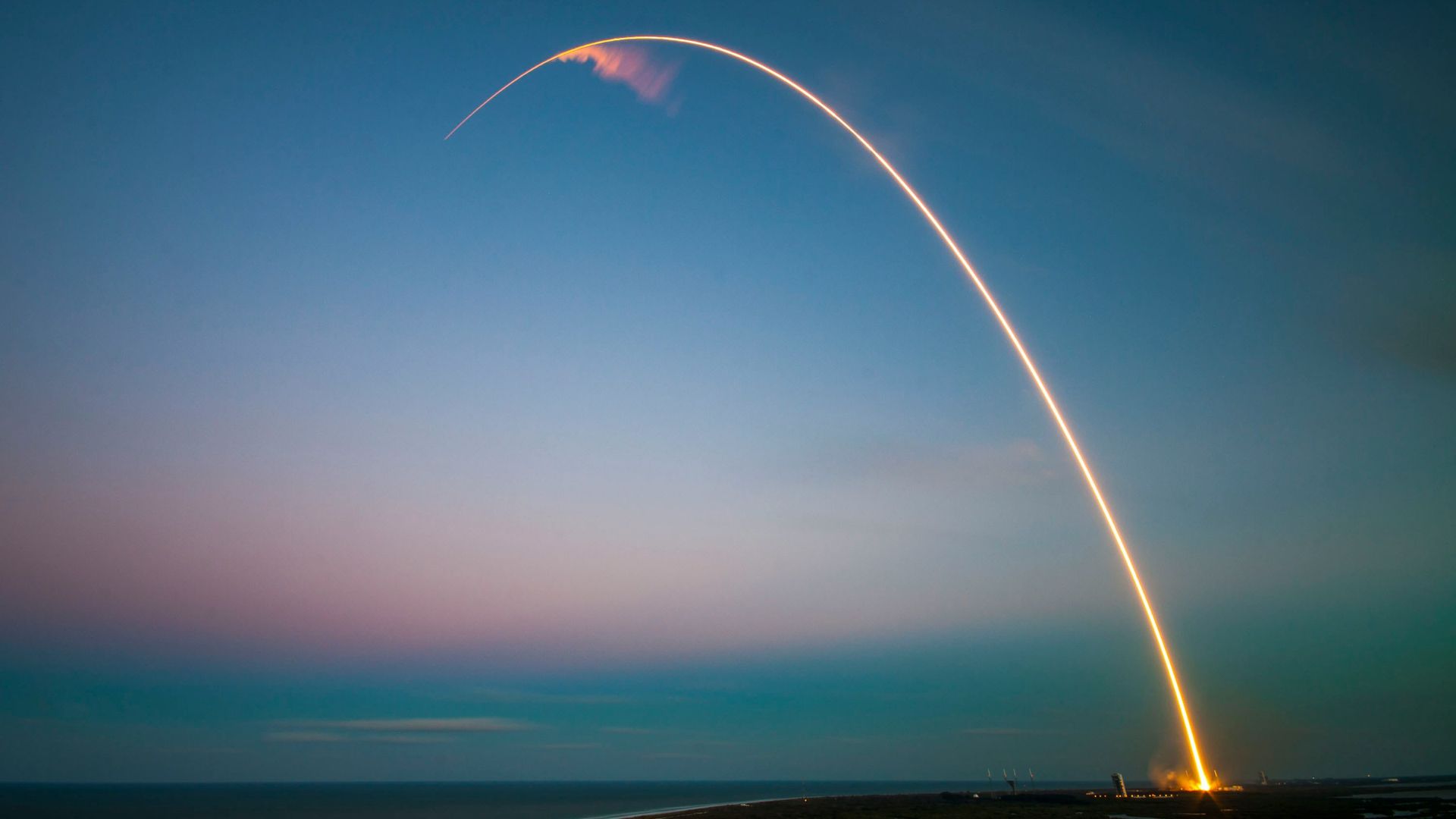A New High Powered Rocket Made by NASA Could Have Humans on Mars in as Little as Two Months
Humans have been dreaming about life on Mars for decades now. Our understanding of the planet and the ability to terraform it has changed immensely with new technology and support from space-crazed billionaires like Jeff Bezos and Elon Musk.
Now, NASA believes they can get humans to Mars in just two months, five months shorter than with current technology. The new project marks a massive breakthrough in space technology and could finally land the first astronaut on another planet – not just the moon.
New Revolutionary Rocket
Earlier this month, NASA secured funding for a new high-thrust rocket. Once built, the Pulsed Plasma Rocket (PPR) would be able to make a crewed mission to Mars in just two months.

Source: NASA
The current technology allows for a 7-month trip each way to the red planet. Lowering the time needed to get to a faraway place would drastically reduce any of the risks associated with such a long mission. According to NASA, it “holds the potential to revolutionize space exploration.”
Latest Development in a Long Run of Successful Missions
In the past few decades, the US has been discussing ways to get the first human on Mars.

Source: SpaceX
There have been many successful unmanned missions to the planet to deliver cameras and robots. For instance, there are currently 21 rovers on Mars collecting images, data, samples, and more information that will be essential if humans ever want to step foot on the harsh planet.
Scientists Are Worried About the Mars Plan
Just this month, scientists reached out to share their concerns with NASA’s Mars Sample Return program, which faced numerous setbacks. Both budget issues and timeline concerns caused the project to lose billions of dollars in much-needed space funding.

Source: Ezi Tnudz/Unsplash
Now, the same concerns are held for the new technology needed to create such a short trip into space.
Not the First Funding for a Crewed Mars Mission
Before NASA reached the moon, the US had spent billions on proposals for a mission to Mars.

Source: Malik SHibly/Unsplash
However, none of the attempts ever left the atmosphere. It’s more than just technology standing in its way, politics plays a huge role in deciding what space missions get funding.
Many Scientists in the Mars Space Exploration Community Laugh at the Idea
It’s a well-known joke in the Mars exploration community that the first manned mission to the Red Planet is still 2o years away. Even though the technology is extremely viable today, many think that the political situation would need to change drastically.

Source: National Air and Space Museum/Wikipedia Commons
The curator for the National Air and Space Museum told Business Insider, “That’s kind of like a joke within the space community or the Mars community. Putting humans on Mars is always 20 years away.”
The First Mars Project in the 1950s
In the early days of space exploration, no one knew what landing on another planet might bring. However, the money and power that the Nazi party held meant that they dreamt up some pretty far-fetched scenarios.

Source: NASA/Wikipedia Commons
Wernher Von Braun, a member of the Nazi party in the 40s, created V-2 missiles. After the war, he continued his work on missiles with the US Army as part of Operation Paperclip. He also envisioned NASA’s first 10-year plan to send humans to Mars with a 260-day launch with 10 spaceships and 70 crew members.
First Images of Mars Sparked Curiosity
NASA funding exploded in the 1960s, enabling massive strides in space exploration and research. While the first manned mission to the Moon was well-understood, teams behind the scenes also took the first close-up images of Mars’s surface.

Source: ESA/Wikipedia Commons
The images were taken by a probe in space and transmitted to Earth. Although fuzzy and hard to make out, it was the first time that anyone on Earth had seen the surface of another planet.
Sally Ride Was a Proponent of the Mars Plan
Several well-known astronauts boarded the tragic Space Shuttle Challenger mission in 1985. The rocket exploded just after takeoff, sending shockwaves through the country as they had just watched several astronauts lose their lives.

Source: NASA Johnson Space Center
After the mission, space missions seemed to fizzle for the moment. A year later, NASA’s administrator tasked Sally Ride, the first woman in space, with laying out her expectations for space exploration. In her plans, she outlined what it would take to land a man on Mars by 2005.
The First Mars Observer Brought Excellent Information
By the mid-1990s, Mars enthusiasts could see a glimmer of hope with the new millennium approaching.

Source: Sufyan/Unsplash
Although communication was lost in 1993, the robotic probe Mars Observer sent back millions of images and priceless information about the planet.
Billionaire Space Enthusiasts Take on the Task
In recent years, electric vehicle mogul Elon Musk started his company SpaceX and envisioned a plan where he could get people to Mars in less than a decade.

Source: Wikimedia
Although he has now revised his plant to colonize the planet in 2050, no unmanned missions have made it there yet.
Current Mission for Deep Space Exploration
In 2017, then-President Donald Trump established NASA’s Artemis Program. Its current mission is deep-space exploration.

Source: Wikimedia
The purpose of the mission is to return humans to the moon and create a large lunar space station where astronauts can live for weeks or months at a time. It’s the first step in making massive moves towards the next planet on the horizon.
